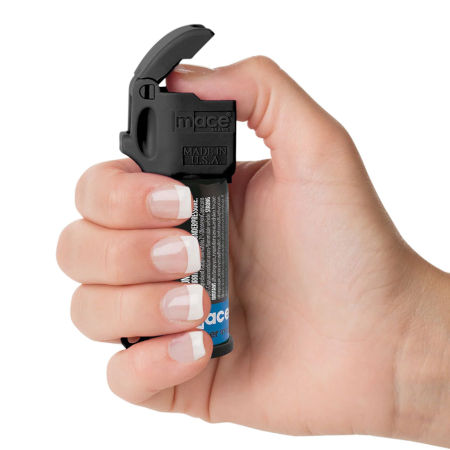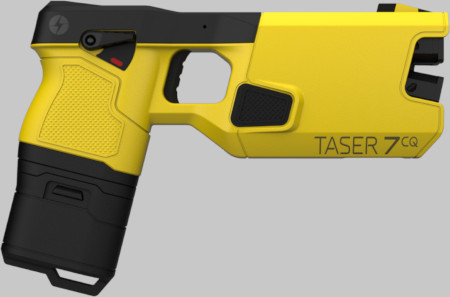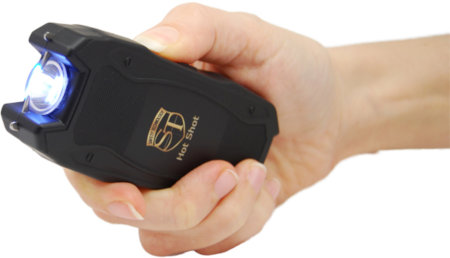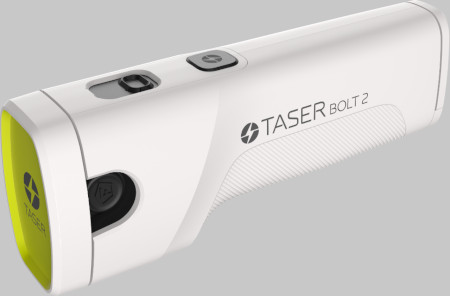Choosing the Best Self-Defense Tool: Pepper Spray, Taser, or Stun Gun?
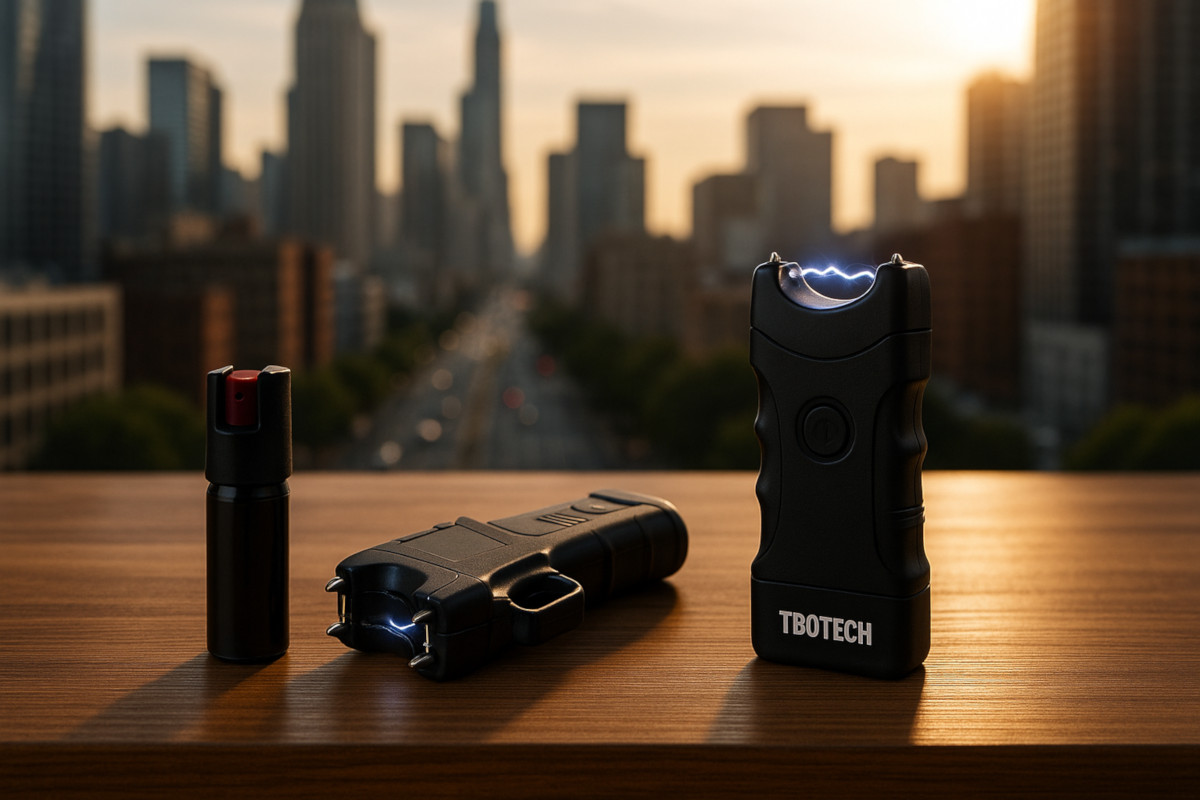
Choosing the right self-defense tool can be a life-saving decision. With crime rates rising—FBI data reports a 3% increase in violent crime in urban areas in 2024—tools like pepper spray, tasers, and stun guns are more popular than ever. But which is best for you? In this guide, we’ll compare pepper spray vs. taser vs. stun gun to help you decide, featuring TBOTECH’s top products to keep you safe in 2025.
Understanding Your Self-Defense Options
Each tool has unique strengths, limitations, and use cases. Let’s break down the key differences to address your safety needs.
What Is Pepper Spray?
Pepper spray is a non-lethal aerosol that uses capsaicin to cause intense burning, temporary blindness, and respiratory distress, incapacitating an attacker for 15-45 minutes.
- Range: 6-12 feet, depending on the model.
- Effectiveness: Works on most people, even those under the influence, but may be less effective in windy conditions due to blowback risk.
- Ease of Use: Simple to use—point and spray. No training required.
- Legality: Legal in most states with restrictions on size and concentration (e.g., 2.5 oz limit in California).
- Cost: Affordable, starting at $8.95 (e.g., TBOTECH’s Pepper Spray).
Tear Gas Enhanced MACE Pepper Spray
What Is a Taser?
A taser is an electroshock weapon that shoots prongs up to 15 feet, delivering an electric current to disrupt muscle control, incapacitating an attacker for up to 30 seconds.
- Range: Up to 15 feet (civilian models like the TASER Pulse).
- Effectiveness: Highly effective but requires accuracy to hit with both prongs. Less effective if only one prong connects.
- Ease of Use: Requires some training to aim and fire; reload needed after one shot.
- Legality: Restricted in some states (e.g., illegal in Hawaii without the certification class); often requires a background check.
- Cost: More expensive, starting at $399 (e.g., TBOTECH’s TASER Devices).
What Is a Stun Gun?
A stun gun delivers an electric shock through direct contact, causing pain and muscle disruption to deter an attacker, typically lasting a few seconds.
- Range: Contact only—requires close proximity.
- Effectiveness: Effective for close encounters but less reliable against thick clothing or determined attackers.
- Ease of Use: Simple to use—press against the attacker and activate. No training needed.
- Legality: Legal in most states but restricted in some (e.g., illegal in Hawaii without certification).
- Cost: Affordable, starting at $18.95 (e.g., TBOTECH’s Stun Guns).
Stun Master Hot Shot Stun Gun Flashlight 90 Million Volts
Comparison Table: Pepper Spray vs. Taser vs. Stun Gun
| Feature | Pepper Spray | Taser | Stun Gun |
|---|---|---|---|
| Range | 6-12 feet | Up to 15 feet | Contact only |
| Effectiveness | High, but wind can reduce impact | High, but requires accuracy | Moderate, needs close contact |
| Ease of Use | Simple (point and spray) | Moderate (requires aiming) | Simple (contact and activate) |
| Legality | Legal in most states with restrictions | Restricted in some states | Legal in most states with restrictions |
| Cost | $8.95+ | $399+ | $18.95+ |
Which Is Best for You?
Your choice depends on your lifestyle, comfort level, and local laws:
- Best for Everyday Carry: Pepper spray is lightweight, affordable, and easy to use, making it ideal for daily protection. TBOTECH’s Pepper Spray ($8.95) is a top choice for its 10-foot range and compact design.
- Best for Maximum Stopping Power: A taser offers long-range defense and is highly effective, but it’s costly and requires training. Consider TBOTECH’s TASER Devices if you’re comfortable with the investment.
- Best for Close-Range Defense: A stun gun is affordable and simple, perfect for close encounters. TBOTECH’s Stun Guns ($18.95+) are a reliable option for those prioritizing ease of use.
Additional Safety Tools from TBOTECH
- Personal Alarm Keychain ($21.95) – Emits a 130-decibel siren to deter attackers and alert others.
- Tactical Pen ($12.95) – A discreet tool for close-range defense.
Frequently Asked Questions
Which is better: pepper spray or taser?
Pepper spray is better for affordability and ease of use, while a taser offers long-range stopping power but requires training and is more expensive.
Should I choose a stun gun or pepper spray?
Choose a stun gun for close-range defense if you’re comfortable with contact; opt for pepper spray for a safer distance and broader effectiveness.
Are tasers and stun guns legal in my state?
Legality varies by state. Pepper spray is legal in most states with restrictions, while tasers and stun guns are restricted in states like Hawaii and Rhode Island (require permit). Check local laws before purchasing.
Explore More TBOTECH Self-Defense Resources
- Shop Pepper Spray – Affordable and effective defense.
- Shop Stun Guns – Reliable close-range protection.
Choose Your Self-Defense Tool Today
Whether you opt for pepper spray, a taser, or a stun gun, TBOTECH has the tools you need to stay safe. Compare your options, check local laws, and take control of your safety in 2025. Shop TBOTECH now and protect yourself with confidence!
Add your comment now!
Post Comment
